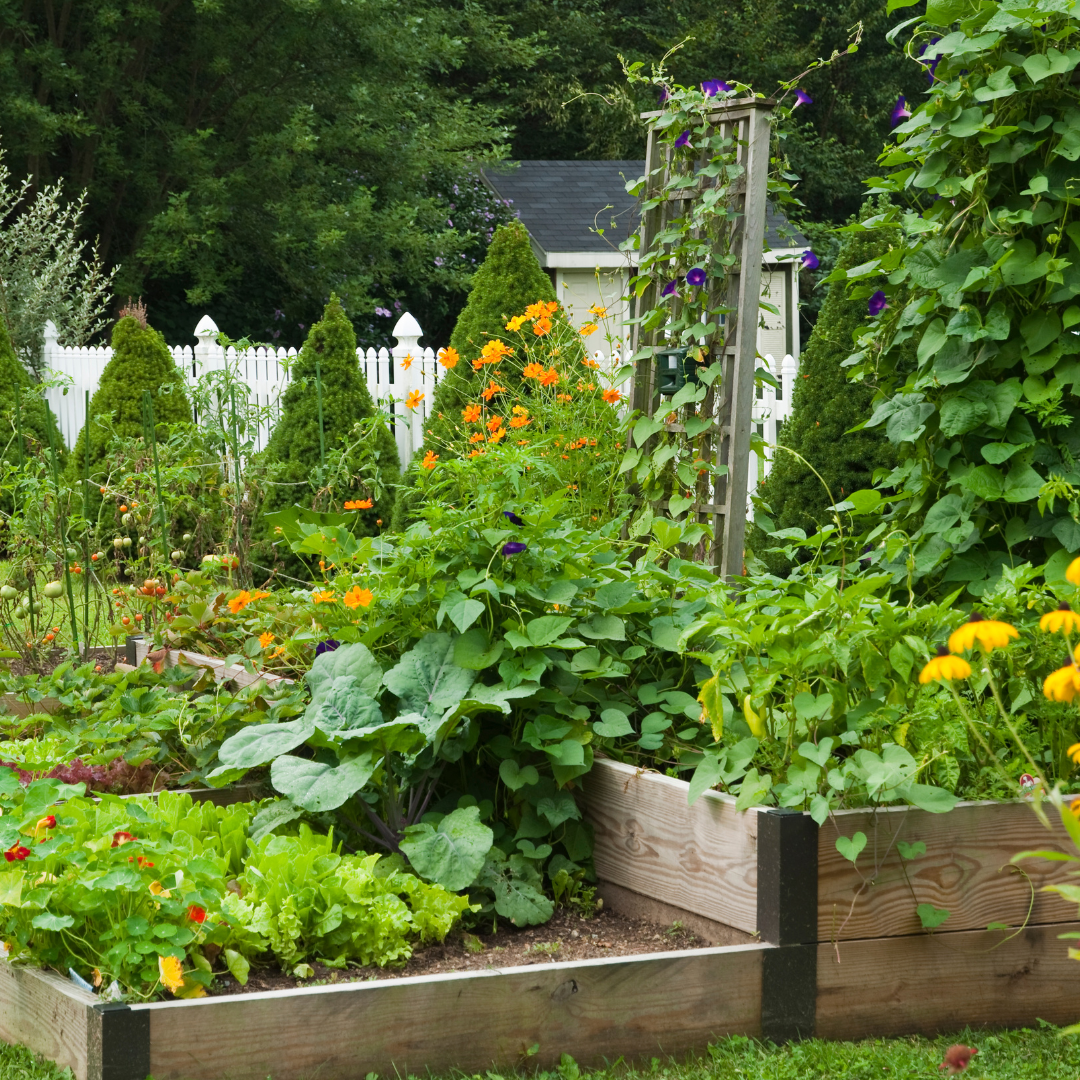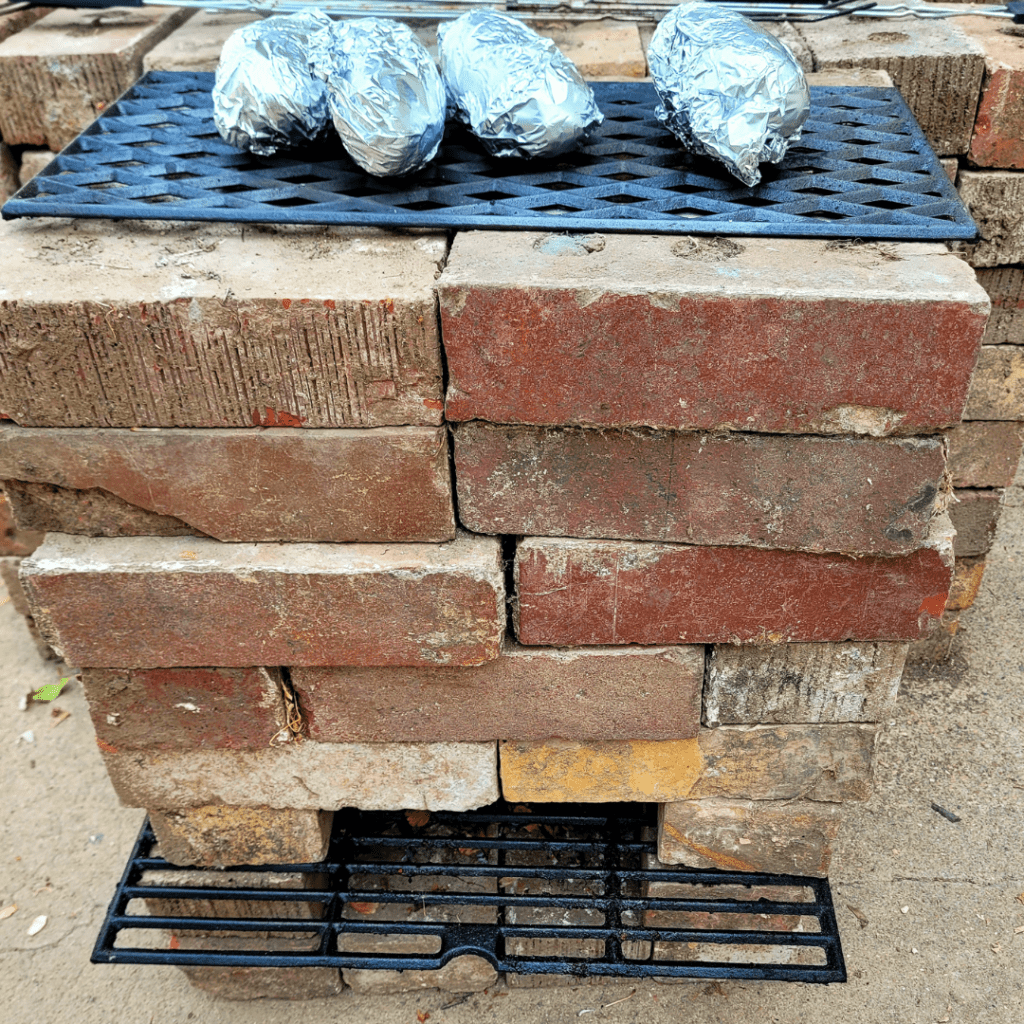Learn how to start urban homesteading in your backyard now and create a sustainable, self-sufficient space even in the heart of the city. This guide shares practical tips for growing your own food, raising small backyard animals, and making the most of limited space. Discover simple, budget-friendly strategies to transform your backyard into an urban homestead that nurtures both body and soul.
Urban homesteading isn’t just for those with sprawling rural properties—it’s for anyone who dreams of growing their own food, raising chickens, or creating a cozy, productive backyard oasis. Even in a small city yard, you can start your journey toward self-sufficiency with a little creativity, some planning, and a willingness to get your hands a bit dirty.
In this guide, I’ll walk you through practical steps for planning your space, selecting the right plants and small animals, and incorporating sustainable practices that fit your urban lifestyle. From container gardens and vertical growing towers to composting and rainwater collection, you’ll see that every little effort adds up. It’s time to roll up your sleeves, reconnect with nature, and enjoy the satisfaction of producing your own little corner of abundance—right at home, no matter the size of your backyard!
This is a pinnable post. Tap or hover over any image in this post to pin to your Pinterest Boards.
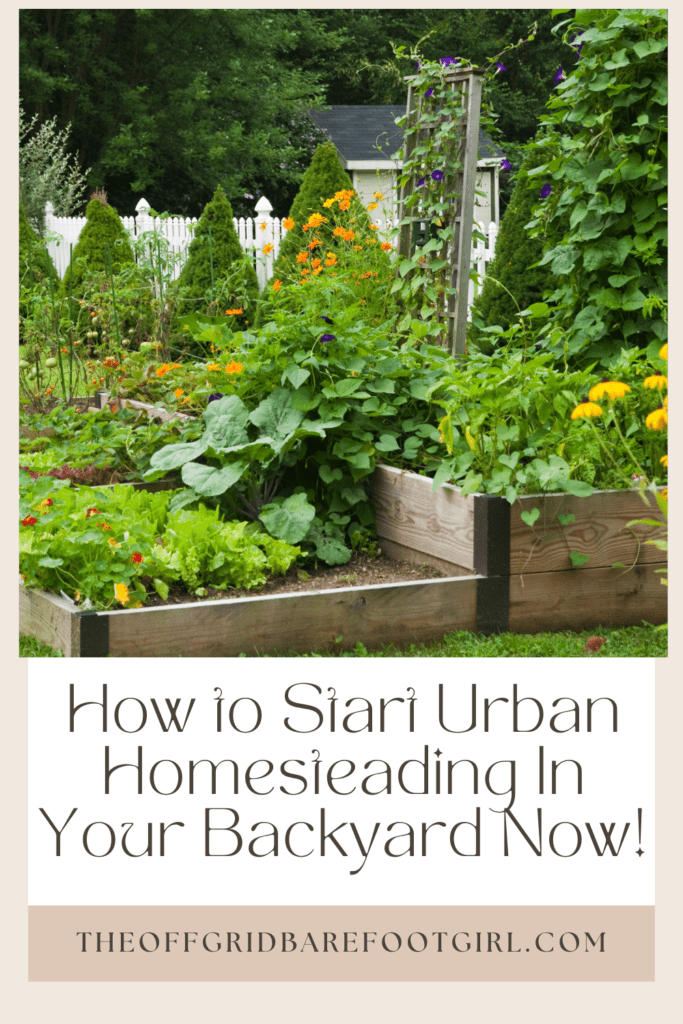
Do You Have a Dream of Urban Homesteading?
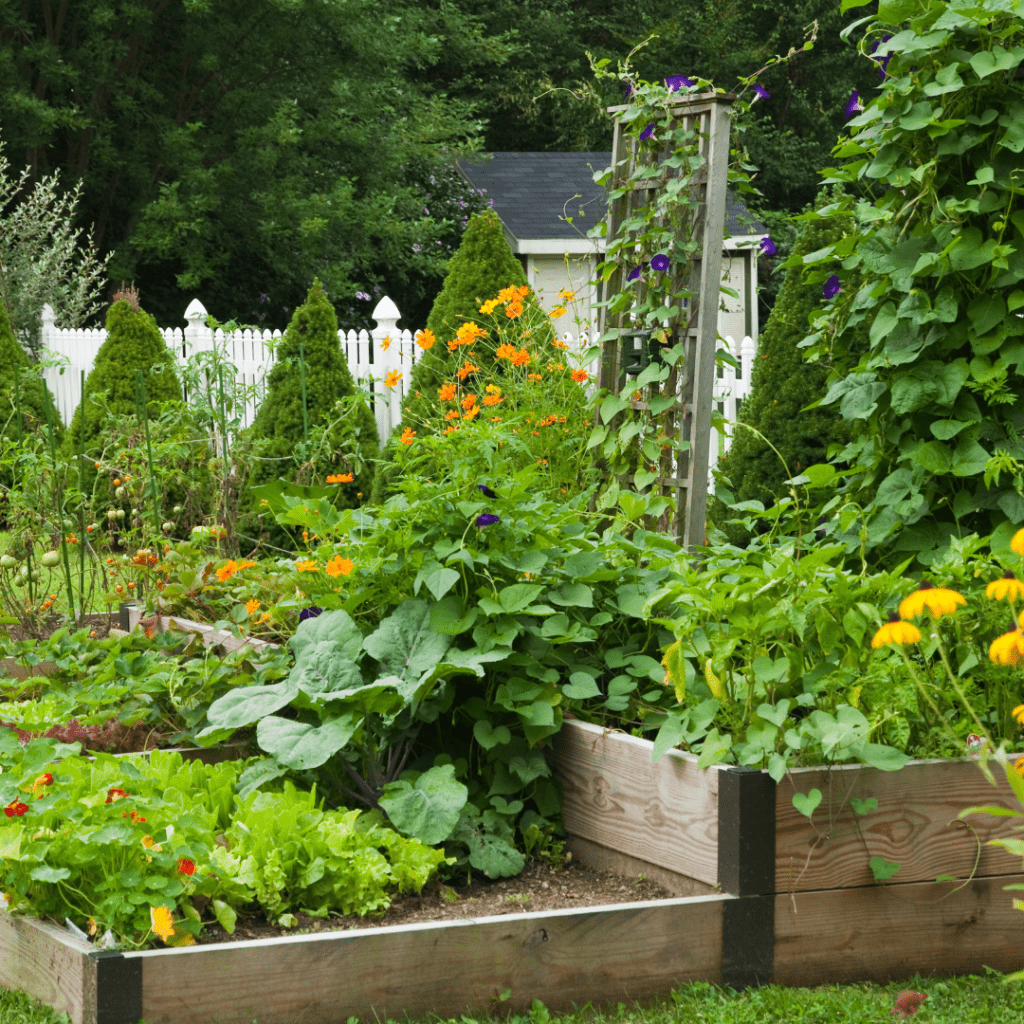
Urban homesteading is a growing trend that allows city dwellers to embrace a more self-sufficient and sustainable lifestyle right in their own backyard. In this introductory section, I will provide an overview of urban homesteading and why it has gained popularity in recent years.
Understanding Homesteading
Homesteading traditionally refers to a lifestyle of self-reliance, characterized by home food production and simple living. In the urban context, this concept has evolved to fit a more compact setting without the vast land typically associated with traditional homesteading.
Urban Homesteading Explained
Urban homesteading involves applying homesteading principles within an urban or suburban environment. It focuses on maximizing the use of limited space to grow food, raise animals, and practice sustainable living techniques. This modern approach adapts traditional homesteading practices to suit the constraints of city living.
Principles of Homesteading
The core principles of homesteading, such as sustainability, self-sufficiency, and community building, remain fundamental in urban homesteading. By integrating these principles into daily life, urban homesteaders aim to reduce their ecological footprint, increase food security, and foster a deeper connection with nature.
Urban Homesteading Essentials

Urban homesteading is a lifestyle that promotes self-sufficiency and sustainability within an urban setting. In this section, we will get into the fundamental aspects that define urban homesteading and its principles.
Understanding Homesteading
Homesteading involves creating a self-sufficient lifestyle by growing your own food, raising animals, and reducing dependency on external resources. It is about returning to traditional skills and practices to live more sustainably. In an urban setting, this may mean utilizing small spaces efficiently for gardening and adopting practices like composting and food preservation.
Urban Homesteading Explained
Urban homesteading adapts traditional homesteading practices to fit within the constraints of city living. It involves practices such as rooftop gardening, beekeeping, and raising backyard chickens. Urban homesteaders aim to produce their own food, minimize waste, and lead a more environmentally conscious lifestyle while living in metropolitan areas.
Principles of Homesteading
Homesteading is guided by principles like self-sufficiency, frugality, and sustainability. It focuses on reducing waste, conserving resources, and fostering a connection to the land. By embracing these principles, urban homesteaders promote a more mindful way of living that benefits both themselves and the environment.
Getting Started with Urban Homesteading

To start on your urban homesteading journey, it is essential to begin with the right approach and mindset. This section will guide you through the initial steps required to kickstart your urban homesteading venture.
Starting Small and Practical
- Begin with Basic Projects: Start by undertaking small and manageable projects such as growing herbs or setting up a compost bin.
- Focus on Essential Skills: Prioritize learning skills like gardening, basic carpentry, or food preservation to build a strong foundation.
- Set Realistic Goals: Define achievable goals that align with your available time and resources to avoid feeling overwhelmed.
Incorporating Traditional Skills
- Learn Time-Honored Techniques: Explore traditional methods of gardening, food preservation, and crafts to incorporate sustainable practices.
- Embrace Heritage Skills: Consider practices like fermenting foods, seed saving, or handcrafts that have stood the test of time for self-sufficiency.
- Attend Workshops or Classes: Seek out local workshops or online resources to learn traditional skills from experienced practitioners.
Touring Urban Homesteads
- Gain Inspiration: Visit established urban homesteads in your area to gather ideas and see practical implementations firsthand.
- Ask Questions and Seek Advice: Engage with homesteaders during your visits to learn from their experiences and gain valuable insights.
- Attend Homesteading Events: Participate in homesteading tours or open-house events to network with like-minded individuals and expand your knowledge.
Utilizing Small Spaces
- Optimize Vertical Space: Utilize wall-mounted planters, vertical gardening systems, or hanging baskets to make the most of limited space.
- Create Microclimates: Identify sunny and shaded spots in your backyard to grow a variety of plants that thrive in different conditions.
- Try Container Gardening: Grow vegetables, herbs, or flowers in portable containers or pots to maximize space flexibility and mobility.
By starting small, embracing traditional skills, exploring urban homesteads, and utilizing small spaces effectively, you can lay a solid foundation for your urban homesteading journey. These initial steps will help you gradually expand your self-sufficient lifestyle while enjoying the process of sustainable living in an urban setting.
Essential Practices for Urban Homesteading
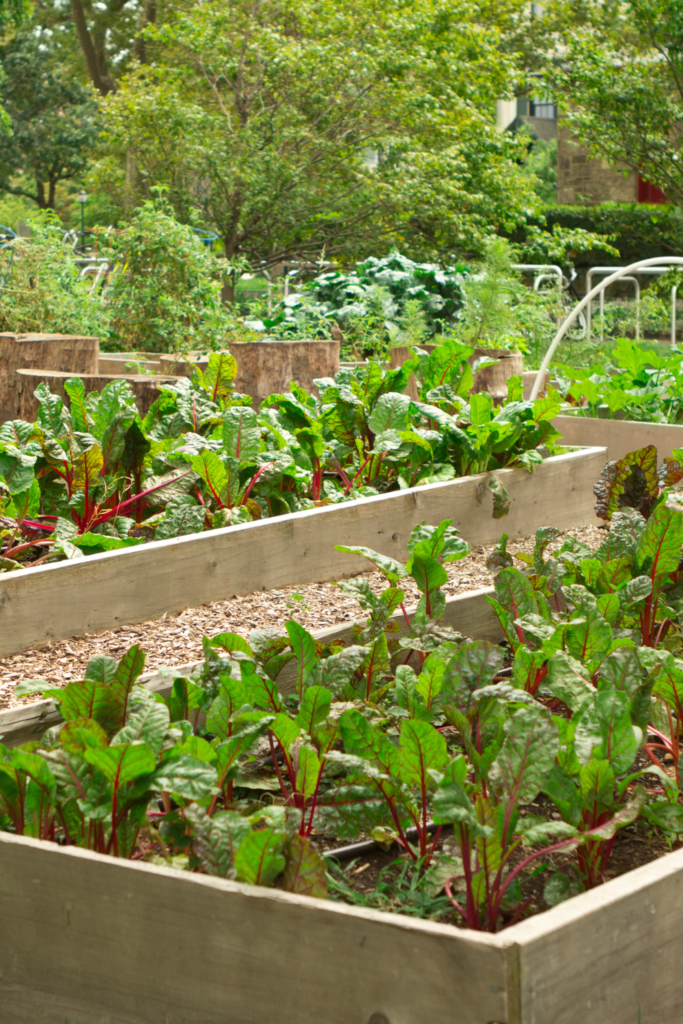
Gardening Techniques
In urban homesteading, effective gardening techniques are essential for maximizing limited space and resources. Consider the following techniques:
- Vertical Gardening: Utilize walls or trellises to grow plants vertically and save space.
- Intensive Gardening: Practice planting crops close together to increase yields and reduce weeds.
- Container Gardening: Use containers like pots and hanging baskets for growing herbs, vegetables, and fruits in small spaces.
- Companion Planting: Planting complementary crops together to enhance growth and deter pests naturally.
Check out my vegetable garden projects for a lot of gardening tips and techniques!
Food Preservation Methods
Preserving food is crucial for homesteaders to enjoy seasonal produce year-round. Some popular food preservation methods include:
- Canning: Using heat to preserve food in glass jars for long-term storage.
- Freezing: Keeping food fresh by freezing it at low temperatures.
- Drying: Dehydrating or freeze-drying food to remove moisture and prevent spoilage.
- Fermenting: Cultivating beneficial bacteria to preserve and enhance the flavor of food items like vegetables and dairy.
Check out my pantry prepping ideas and techniques to learn how to stock your pantry.
Composting Basics
Composting is a sustainable practice that recycles organic waste into nutrient-rich soil for gardening. Here are some basic composting tips:
- Green and Brown Matter: Balance nitrogen-rich green waste (e.g., food scraps) with carbon-rich brown waste (e.g., leaves) for proper decomposition.
- Turning: Regularly turn the compost pile to aerate it and speed up the decomposition process.
- Moisture Control: Keep the compost moist but not soggy, similar to a wrung-out sponge.
- Layering: Alternate layers of green and brown matter to promote decomposition and prevent odors.
I have written many posts about composting for you to check out.
- Clever Ways to Incorporate Indoor Composting into Your Home
- How to Start Composting for the Garden: A Step-by-Step Guide
- The Ultimate Guide to Composting in Your Suburban Backyard
Backyard Farming with Animals
Raising animals in your backyard can provide fresh produce and enrich the homesteading experience. Consider these aspects when starting backyard farming with animals:
- Local Regulations: Check local ordinances and restrictions concerning the types and numbers of animals allowed.
- Animal Welfare: Ensure proper care, shelter, and nutrition for the animals you choose to raise.
- Space Considerations: Evaluate the space available for animals and plan accordingly to meet their needs.
- Start Small: Begin with easy-to-manage animals like chickens or rabbits before expanding to larger livestock like goats or pigs.
Sustainable Lifestyle in Urban Homesteading
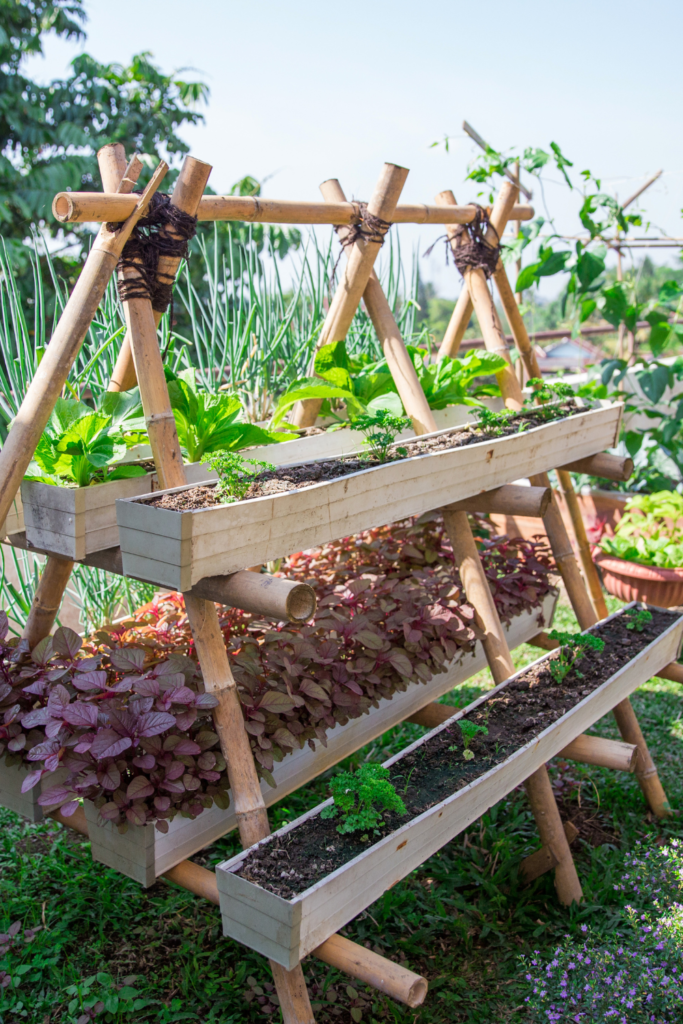
In the realm of urban homesteading, adopting a sustainable lifestyle is not just beneficial for the environment, but also for your overall well-being and community. This section will get into key aspects such as embracing non-consumerism, incorporating sustainable living practices, and supporting the local economy.
Embracing Non-Consumerism
- Minimalism: Embracing minimalism and reducing unnecessary consumption can lead to a more sustainable lifestyle.
- DIY Culture: Engaging in do-it-yourself practices like making natural cleaning products or repairing items instead of buying new ones promotes non-consumerism.
- Upcycling: Reusing items creatively through upcycling not only reduces waste, but also encourages a mindset of resourcefulness and sustainability.
Sustainable Living Practices
- Energy Efficiency: Implement energy-efficient practices such as using LED lights, reducing water waste, and investing in solar panels where feasible.
- Waste Reduction: Embrace a zero-waste lifestyle by composting organic waste, recycling, and reducing single-use items in your daily routine.
- Water Conservation: Employ water-saving techniques like collecting rainwater, installing drip irrigation systems, and choosing drought-resistant plants for your urban homestead.
I have written some informative posts to help you learn effective ways to live a more sustainable and minimalistic lifestyle.
- Secrets of Sustainable Living to Live a Greener Life!
- How to Become a Minimalist and Simplify Your Life
- Sustainable Household and Personal Products
- Sustainable Living
Supporting Local Economy
- Buying Local: Support local farmer’s markets, artisans, and businesses to reduce carbon footprint from transportation and strengthen the local economy.
- Bartering and Trading: Engage in bartering or trading excess produce or homemade goods with neighbors or local community members to foster a sense of community and reduce reliance on commercial industries.
- Community Involvement: Participate in community events, workshops, or initiatives that promote local sustainability and economic growth, contributing to a more resilient and interconnected urban homesteading network.
By integrating these sustainable lifestyle practices into your urban homesteading journey, you not only create a more eco-friendly living environment, but also inspire others to join the movement towards a greener and more sustainable future.
Want more homesteading guides? Check out: The Real-Life Homesteading Guide: Expectations, Challenges, and How to Thrive
Learn tips of how to effectively barter and shop and support the local farmers and Amish markets.
- Bartering: How To Negotiate Commodities with Astonishing Results!
- How to Shop the Amish Market: Scoring Big Savings!
- How Supporting Farmer’s Markets Makes a Difference
Community Engagement and Resources
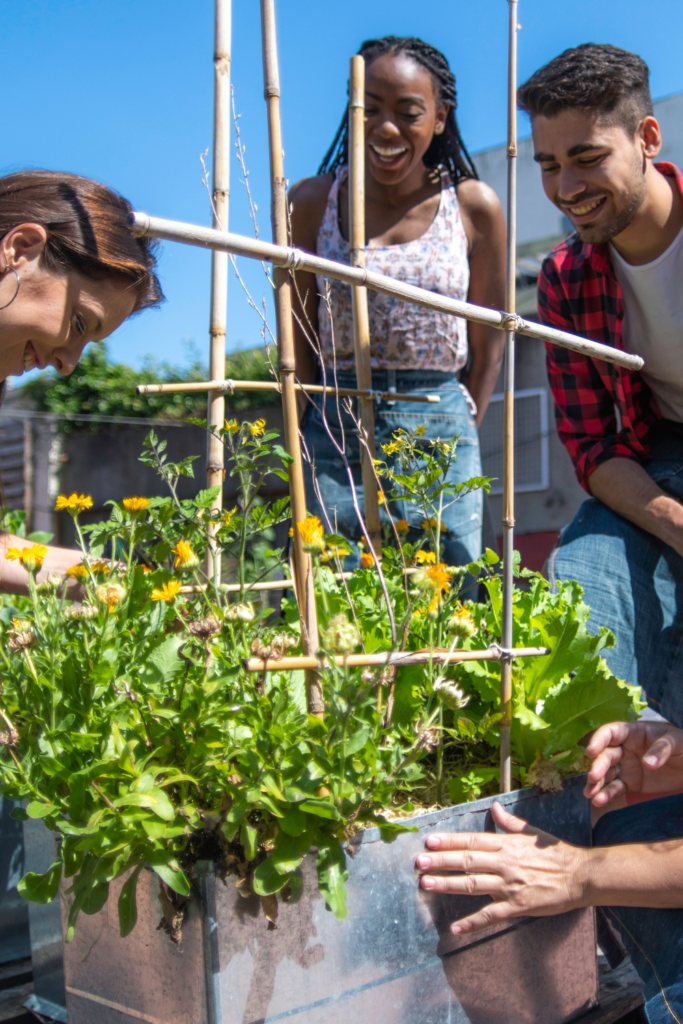
Building Urban Homesteading Communities
Building a strong community around urban homesteading is essential for sharing knowledge, resources, and support. Here’s how you can build and engage in homesteading communities:
- Local Workshops and Events: Attend or organize workshops, swap meets, and events to meet like-minded individuals in your area.
- Community Gardens: Participate in or initiate community garden projects where people can collectively grow produce and share gardening tips.
- Social Media Groups: Join online groups dedicated to urban homesteading to connect with a broader community and learn from experienced homesteaders.
- Community Projects: Collaborate on projects like seed swaps, neighborhood composting, or creating community green spaces to foster a sense of togetherness and sustainability.
Homesteading Resources
Accessing the right resources is crucial for successful urban homesteading. Here are some essential resources to consider:
- Local Extension Offices: Contact your local agricultural extension office for guidance on gardening, pest control, and sustainable practices.
- Library Resources: Explore books, magazines, and online resources related to homesteading, gardening, food preservation, and sustainable living.
- Seed Exchanges: Participate in seed exchanges to diversify your garden produce and connect with fellow gardeners.
- Homesteading Workshops: Attend workshops on topics like beekeeping, chicken raising, or canning to enhance your skills and knowledge.
Online Platforms and Communities
Engaging with online platforms and communities can provide a wealth of information and support for your urban homesteading journey:
- Forums and Discussion Boards: Participate in homesteading forums to ask questions, share experiences, and learn from a diverse community of homesteaders.
- Social Media Groups: Join Facebook groups, Reddit communities, or Instagram pages dedicated to urban homesteading to interact with enthusiasts worldwide.
- Homesteading Blogs: Follow blogs of experienced homesteaders for valuable tips, tricks, and personal insights into successful urban homesteading.
- Online Courses: Enroll in online courses on topics like permaculture, rainwater harvesting, or livestock management to expand your skills and knowledge base.
Things to Consider
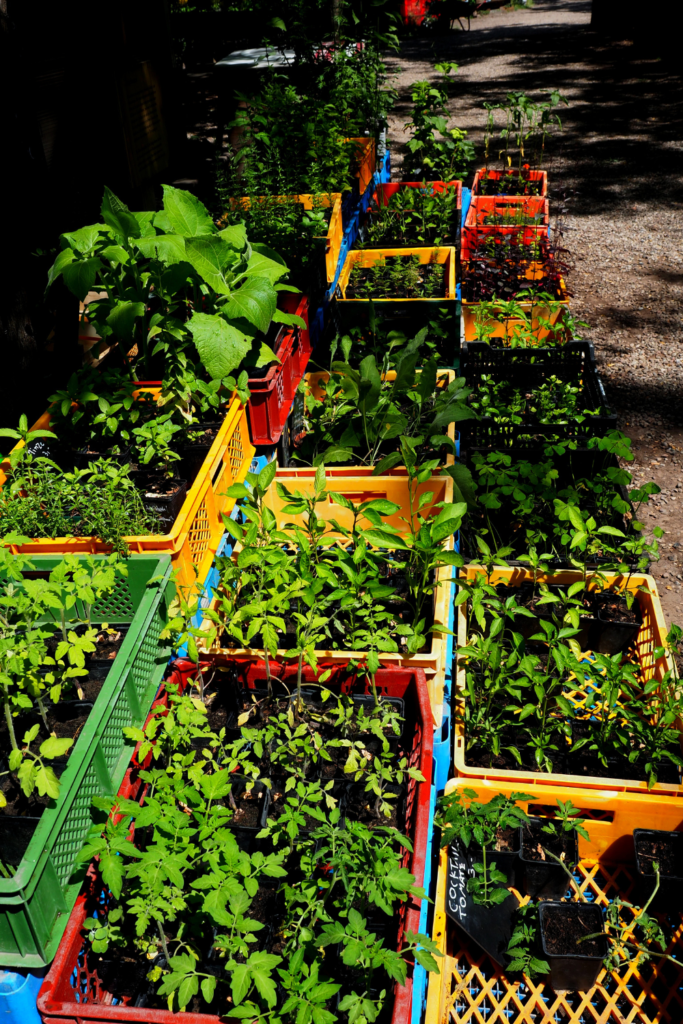
Reflecting on Your Urban Homesteading Journey
As you reach the end of this guide, take a moment to reflect on the incredible journey you’ve set out on with urban homesteading. Consider the progress you’ve made, the challenges you’ve overcome, and the new skills you’ve acquired along the way.
Celebrating Successes and Learning from Failures
Celebrate your successes, no matter how small they may seem. Every harvest, every homemade meal, and every eco-friendly practice contributes to a more sustainable lifestyle. Remember, failures are just opportunities to learn and improve. Embrace them as valuable lessons on your homesteading path.
Committing to Continuous Growth and Sustainability
Urban homesteading is not just a hobby; it’s a commitment to living intentionally and sustainably. As you move forward, continue to seek new ways to grow your skills, expand your urban homestead, and contribute positively to your community and the environment.
Joining the Urban Homesteading Community
You are not alone on this journey. Consider joining local urban homesteading communities or online forums to connect with like-minded individuals, share experiences, and learn from each other. Building a supportive network can provide inspiration, knowledge, and encouragement for your urban homesteading endeavors.
Embracing the Future of Sustainable Living
By embracing urban homesteading, you are contributing to a more sustainable future for yourself, your community, and the planet. Your actions, no matter how small, have a ripple effect that can inspire others to live more consciously and harmoniously with nature. Keep nurturing your urban homestead with love and dedication, knowing that every effort counts towards a greener, healthier world.
Learn more about homesteading in my other posts!
- Apartment Homesteading Made Easy: The Secret to Self-Sufficiency
- The Benefits of Urban Homesteading: Revolutionize Your City Life
- Introducing Homesteading Act and Homestead Exemption: Everything You Need to Know Now
Conclusion
Urban homesteading is not just about growing your own food or making your own products—it’s a mindset, a way of life that prioritizes self-sufficiency, sustainability, and community. As you continue your urban homesteading journey, remember that every seed you plant, every resource you save, and every interaction you have with nature brings you closer to a more fulfilling and meaningful existence.
Starting an urban homestead in your backyard is a journey filled with learning, growth, and a deeper connection to nature. By following the steps outlined in this guide, you can transform even the smallest space into a productive and sustainable haven. Embrace the challenges and enjoy the rewards that come with growing your own food, raising small livestock, and living more sustainably.
Remember, every small effort contributes to a larger impact on your health, your community, and the environment. So, take the plunge and start your urban homesteading adventure today – your backyard has the potential to become a thriving, self-sufficient paradise and I am here to cheer you on every step of the way! Cheers to your urban homesteading adventure—may it be fruitful, rewarding, and endlessly inspiring!
Resources: Here are some helpful resources for further information.
- How to Garden and Landscape – By Country Living
- Gardening for Beginners – By Gardener’s World
- Simple Self Sufficient Off Grid Living – By Homesteading

Frequently Asked Questions
1. Can I start urban homesteading in a small backyard?
Absolutely! Urban homesteading is all about making the most of the space you have. Even a small backyard can support container gardening, vertical gardens, and a few small livestock like chickens or rabbits. Creative planning and efficient use of space are key to maximizing your backyard’s potential.
2. Do I need special permits to start urban homesteading?
This depends on your local regulations. Some cities have specific zoning laws and ordinances regarding livestock, gardening structures, and composting. It’s important to check with your local government or city council to understand the requirements and obtain any necessary permits before you start.
3. What are the best plants for a beginner urban homesteader?
For beginners, it’s best to start with easy-to-grow, low-maintenance plants. Herbs like basil, mint, and rosemary, as well as vegetables such as tomatoes, lettuce, and radishes, are great options. These plants adapt well to container gardening and can thrive in small spaces.
4. How can I manage pests in an urban homestead?
Urban homesteads can attract various pests, but there are eco-friendly ways to manage them. Use natural repellents, companion planting, and introduce beneficial insects like ladybugs to control pest populations. Regularly inspect your plants for signs of pests and address issues promptly to prevent infestations.
Summary
I hope I have inspired you to try urban homesteading with these helpful tips and products. Here are some other links you may be interested in reading!
Crush the Ham Radio Test with This Proven Prep Guide!
Why You Need Ham Radio Aerials for Your Survival Communication!
How to Shop the Amish Market: Scoring Big Savings!
Survive the Peaks: The Best Avalanche Gear on the Market!
Bug In and Survive a Grid Down: Survival Training Course!
Bugout Bags and Survival Training Course with Grid Down Consulting!
Get These Vital Emergency Survival Equipment Now!
Bartering: How To Negotiate Commodities with Astonishing Results!
Warning: Why You Need Whole Home Water Purification Now!
How to Design Off Grid Power Systems for Your Homestead
How Many Watts Does a Fridge Use? Energy Efficient Guide
The Best States for Off Grid Living: Unplugged and Thriving
Composting Toilet Systems Are Surging: Ditch Your Septic Tank Now!
Are Greywater Tanks the Key to Sustainable Living? Find Out Now!
How to Live Off-Grid: 11 Tips to Survive and Thrive!
Are Survival Food Kits Worth It? The Truth Revealed!
Do You Really Need Faraday Bags? The Shocking Truth Revealed!
The Best Doomsday Preppers Blogs to Follow Now Before SHTF!
The Ultimate Camping Gear Checklist: Everything You Need for an Adventure
The Ultimate Spring Cleaning House Checklist: Deep Clean with Me!
How Supporting Farmer’s Markets Makes a Difference
Eco-Friendly Christmas: How to Have an Eco-Friendly Christmas
How to Winterize Your Home: Prepare for Jack Frost’s Wrath!
Proven Hacks to Make Your Christmas Tree Survive
What Thanksgiving Teaches Us About Survival
Homeless Survival Hacks to Overcome Adversity
More Self-Sufficiency Posts!
Is Your Car Ready for Winter? The Ultimate Checklist for Your Winter Emergency Car Kit
What The Walking Dead Can Teach Us About Survival: The Walking Dead Survival Tactics
Get Lockdown Ready: Best Dollar Tree Survival Items
Understanding Water Purification Methods for Survival: Best Practices Explained
Thirsty for Survival: Expert Guide to Emergency Water Prep Tactics
The Benefits of Urban Homesteading: Revolutionize Your City Life
Practical Pantry Prepper: Essential Guide
How to Grocery Shop Once a Month
What Should Be in A 72-Hour Survival Kit?
Buy or Die: Prepper Items You Need Now
How to Learn 58 Self-Sufficient Skills Right Now
Road to Self-Sufficiency: How to Start Your Journey
If you were encouraged by this post, I invite you to check out my FREE Printables Page for fun free printables, planners, and charts.
ENTER MY FREE Printables Page HERE
Blessings,
The Off Grid Barefoot Girl

